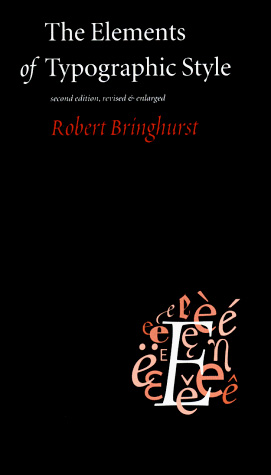LOCATION
Arbury Mac Lab 162
26 August 2024 - 13 December 2024
Mondays & Wednesdays, 9:30AM - 12:20PM
INSTRUCTOR
J. Blake Johnson
jbjohns1@svsu.edu
Arbury Fine Arts 117 – 989 964-2255
OFFICE HOURS
Tuesdays & Thursdays, 10:00am–12:00noon
or one hour as arranged.
ATTENDANCE & TARDINESS
Consistent attendance is essential. Absence due to health reasons requires a doctor's note to avoid grade implications. Being over 30 minutes late is considered an absence.
Class will convene at the scheduled time and location. Attendance guidelines are as follows:
• Three absences = grade reduced by one letter
• Four absences = grade reduced by two letters
• Five absences = course failure
Being late three times counts as one absence. Arriving more than 10 minutes late or leaving 15 minutes early will result in an unexcused absence.
COURSE DESCRIPTION
This course will explore the foundations of quality typography.
Students investigate the aesthetics of type and color through a study of type applied to booklets and research. Students will learn to avoid common type errors and explore the historical background, technical aspects, and communicative abilities of type.
Prerequisites: Art 250 & 260.
Just because the course material is online, treating it as an online class is not an option.
COURSE OBJECTIVES
Help the students learn:
• an awareness and appreciation of letterforms and proper use
• typographic terminology
• the relationship between legibility & communication, in typography
• to recognize typographic errors
• to understand type anatomy & classification
• to gain insight into type history
• to speak about typography critically and fluently
REQUIRED TEXT
The Elements of Typographic Style
by Robert Bringhurst

Other articles and book passages will also be provided.
PROJECT SCHEDULE
There will be 15 assignments/quizzes during this semester.
The schedule is subject to revision at anytime at the discretion of the instructor. The final number of projects may change based on the speed/skill of the class.
KEY PROJECTS - Typography
Turn in to graphic server before midnight on the following Fridays…
100 Points each Due on the Graphic Server on the Friday on the date below
Project 1 - Sep 20 - Symposium Booklet (7 in-class working days)
Project 2 - Oct 25 - Literacy Link Booklet (9 in-class working days)
Project 3 - Nov 22 - MIArts Brochure (8 in-class working days)
Project 4 - Dec 13 - Flyer (4 in-class working days + Finals Week)
KEY PROJECT DEVELOPMENT
Typically each project has five parts:
1) the written concept (Concept Sheet)
2) multiple developmental sketches (Concept Sheet)
3) Computer work - the printed final work
4) the PDF of the final work on the server
5) the presentation of the finished work when required
EXERCISES - Typography
Turn in to graphic server
50 Points
Due on the Graphic Server on the Friday on the date below
Exercise 1 - Aug 30 - Individual Research (Typography Research)
Exercise 2 - Nov 8 - Typography on the Web
CHAPTER SUMMARIES
Complete outside of class
Turn in to graphic server before midnight on the following Fridays…
25 Points each
Due on the Graphic Server on the Friday on the date below
Summary 1 - Sep 13 - The Obscene Typography Machine - Meggs
Summary 2 - Sep 27 - Chapter 1 - The Elements of Typographic Style - Bringhurst
Summary 3 - Oct 11 - Chapter 2 - The Elements of Typographic Style - Bringhurst
Summary 4 - Oct 25 - Chapter 3 - The Elements of Typographic Style - Bringhurst
Summary 5 - Nov 15 - Chapter 4 - The Elements of Typographic Style - Bringhurst
Summary 6 - Nov 29 - Chapter 5 - The Elements of Typographic Style - Bringhurst
QUIZZES
Complete in-class via Canvas (Dates differ for each group)
25 Points each
Due in class on the date below
Quizzes are on Canvas and must be taken in class via Firefox
Quiz 1 - Sep 18 - Anatomy & Terms A
Quiz 2 - Oct 16 - Classification & Terms B
Quiz 3 - Nov 13 - Measurements & Terms C
Quiz 4 - Dec 4 - Grids & Terms D
GRADES AND LEARNING
Work will be assessed based on the quality of the concept, the use of the design principles in support of the concept, and the level of craft in execution. To further explain grade/assessment criteria:
A - sound application of design/typographic principles in support of strong concept, excellent craft.
B - design/typographic principles mostly support concept, good craft.
C - design/typographic principles present but do not support concept, fair craft.
D - basic understanding of design not demonstrated, weak concept, poor craft.
F - no evidence of understanding design, weak or no cohesive idea.
GRADE SCALE
Key project grades are based on an 100 point scale.
Superior
A 93 and above
A- 90 - 92
Very Good
B+ 87 - 89
B 83 - 86
B- 80 - 82
Average
C+ 77 - 79
C 70 - 76
Below Average
D 60 - 69
Failing
F 59 and below
ASSIGNMENT POINTS
There will be fifteen assignments/quizzes during this semester. The schedule is subject to revision at anytime at the discretion of the instructor. The final number of projects may change based on the speed/skill of the class.
A breakdown of points possible:
Project 1 Symposium Booklet 100
Project 2 Literacy Links Booklet 100
Project 3 MI Arts Brochure 100
Project 4 Flyer 100
Exercise 1 Research Presentations 50
Quiz 1 Anatomy & Terms A 25
Quiz 2 Classification & Terms B 25
Quiz 3 Measurements & Terms C 25
Quiz 4 Grids & Terms D 25
Chapter Summary 1 (OTM) 25
Chapter Summary 2 (Ch1-E of TS) 25
Chapter Summary 3 (Ch2-E of TS) 25
Chapter Summary 4 (Ch3-E of TS) 25
Chapter Summary 5 (Ch4-E of TS) 25
Chapter Summary 6 (Ch5-E of TS) 25
———————————————————————————
Total 750
RECORD OF STUDENT WORK
For the purpose of recruitment and promotion, your instructor may be collecting images of your work. Your work may be published in many forms such as on a website or other computer generated advertising.
In addition, the Department may be taking photographs of students and instructors in classroom for the same purpose. Please contact the instructor or the chair of the Art Department, Shaun Bangert, sbangert@svsu.edu, if you do not wish your work or images of yourself to be reproduced or published. We will honor your request.
NON-DISCRIMINATION
SVSU does not discriminate based on race, religion, color, gender, sexual orientation, national origin, age, physical impairment, disability, or veteran status in the provision of education, employment, and other services.
COURSE CONTRACT
Read the entire syllabus carefully. Staying enrolled in this course after reading it will constitute that you understand and agree to follow the requirements and rules of the class as described.
It also will constitute that you understand and agree to receive the point deductions, and to face some academic consequences if you do not follow them accordingly.
STUDENT RESPONSIBILITIES
Exercise creativity and experiment within the parameters of each assignment.
Be open and willing to learn new software tools and design styles.
Prepare for class. Come to class ready to learn. Stay focused and attentive in the classroom. Avoid distractions such as electronics or talking with classmates. Students who violate this rule will have two points deducted from their final grade. In addition, do not leave the classroom during class time, except in case of an absolute emergency.
PRESENTATION AND CRITIQUE PARTICIPATION
Students will present their conceptual ideas to the class during the final project critique. All students are expected to share their ideas with the class, explain what is successful with the piece and learn how the design can be improved. Use a professional and respectful tone while discussing the work of your peers. Critiques should never feel like a personal attack.
Make an effort to be as open to feedback as possible. Feedback should resonate with you as you develop in your design practice. Try to avoid deflecting comments.
COPYRIGHT POLICY
All images used for your projects must be original. This includes, but not limited to, photography, logos, graphic design works, painting, drawings, 3D works, and such. Your work cannot be directly copied from books or ‘taken’ from the web or any other resources.
The Saginaw Valley State University Policy Regarding Copyright briefly outlines those parts of the U.S. Copyright Law which apply to educational institutions. Please see below link for SVSU policy…
LATE WORK
Late work will be accepted, but a 10 point grade deduction will always apply. The instructor’s permission is needed to turn work in late. However, no late work will be accepted two days beyond the project’s due date.
ACADEMIC HONESTY
Cheating will not be tolerated and all cases of cheating will be reported to the Office of Student Conduct Programs. Using someone else’s design or written work as your own, in any form, is recognized as plagiarism. Note: the use of AI tools for your assignments in this course is considered a form of plagiarism.
We will respond to academic dishonesty in one of three ways depending on the depth and nature of the offense:
• You may be asked to repeat the project using your own ideas and work.
• You may be assigned a failing grade for the course in accordance with University regulations.
• A file may be established with the Dean of Students to record the incident, in case of repeated offenses.
ELECTRONIC DEVICES
It is the policy of the Department of Art that the use of electronic devices such as cell phones, laptops, tablets, etc., for personal reasons unrelated to the course is absolutely prohibited and will result in some form of demerit. Violators will be reported to the Department Chair.
A student found using an electronic device for working on a different class project, texting, viewing facebook, streaming video, etc., during class work hours, will suffer a two point penalty on their final grade for every incident. The computers are to be used as classroom tools, not as entertainment.
Turn off/silence your cell phones and leave them in your backpack/purse. Students who violate this rule will have two points deducted from their final grade.
Note: the recording of lectures is only permitted with a letter from the Office of Disability Services. Students must get permission from the instructor before using a laptop to take notes in class.
COMPUTER PROBLEMS
Do not use technical problems as an excuse to hand in your work late. Computers and other electronics do fail. Do not use the loss/failure of drives as an excuse to hand in your work late. Have a backup plan if the files are lost or fail. Always make a back-up of all work done everyday.
SUPPORT SERVICES
Please be advised that success in this course heavily relies on the student’s ability to visually discern distinctions within slide and video presentations. Reasonable accommodations are available for students who have a documented disability. Students with disabilities who seek accommodations must make their request by contacting the Office of Accessibility Resources & Accommodations.
Please notify the instructor during the first week of class of any accommodation(s) needed for the course. All accommodations must be approved in writing through Accessibility Resources & Accommodations (formally known as Disability Support Services). For more information see: https://www.svsu.edu/access/ or send an email to: access@svsu.edu
All arrangements with Accessibility Resources & Accommodations must be made before the end of the 6th week of the term. No contracts will be accepted afterwards. Instead the standards outlined above will stand as the contract for the grades and attendance for the term.
REQUIRED MATERIALS
Supplies for this class are estimated at $35 to $65
- two flash drives (16 GB or larger)
- spiral bound notebook or 3 ring binder

